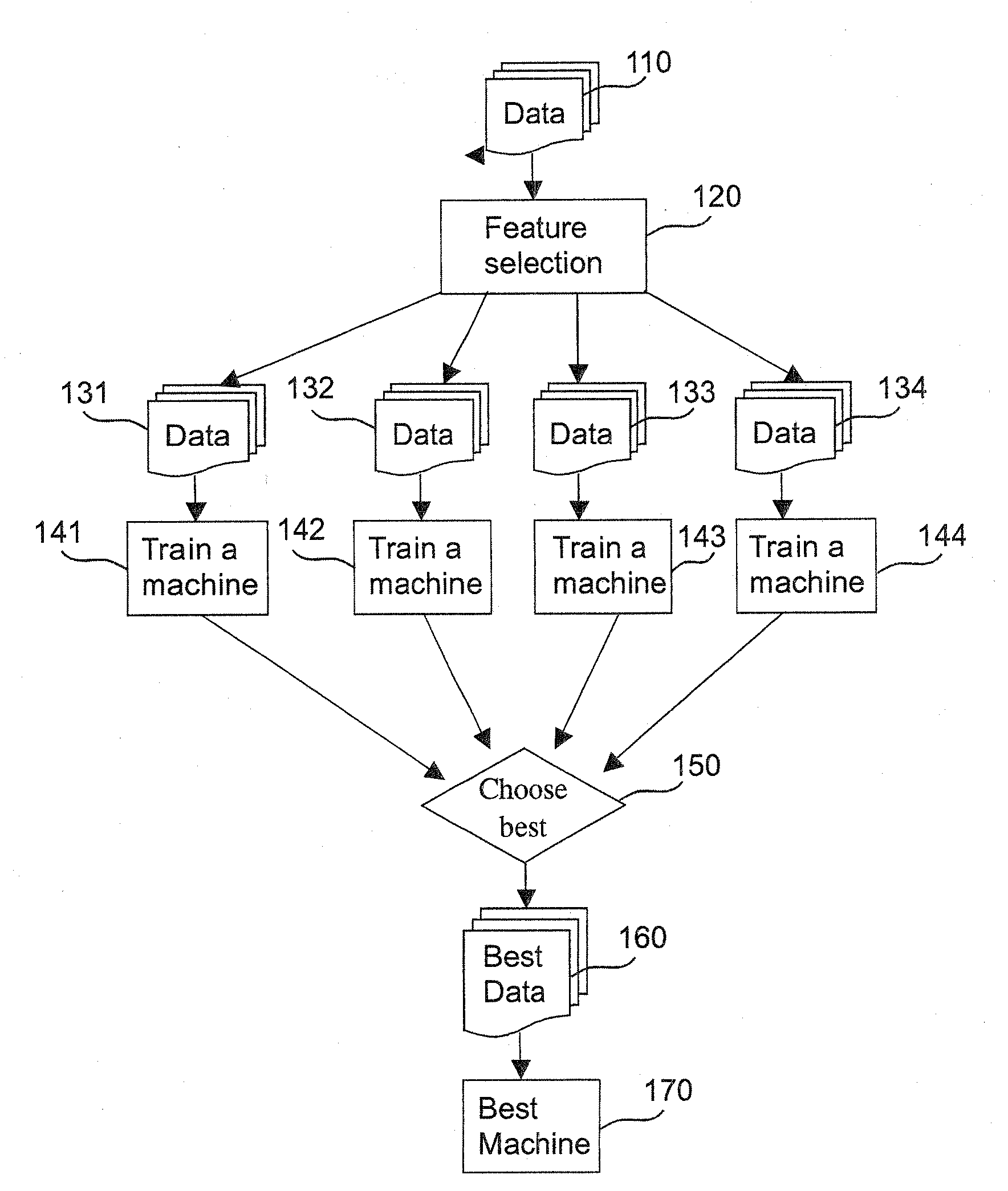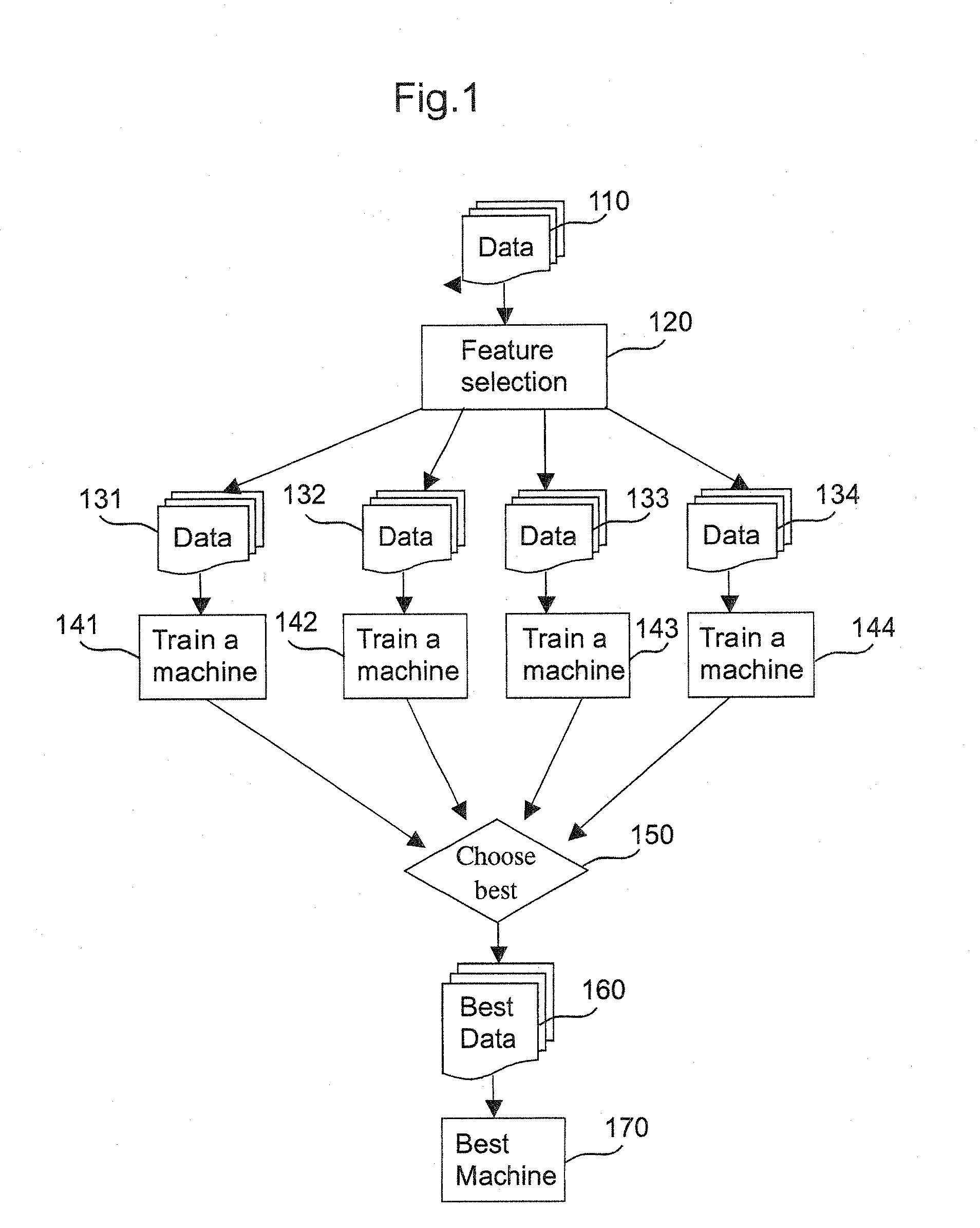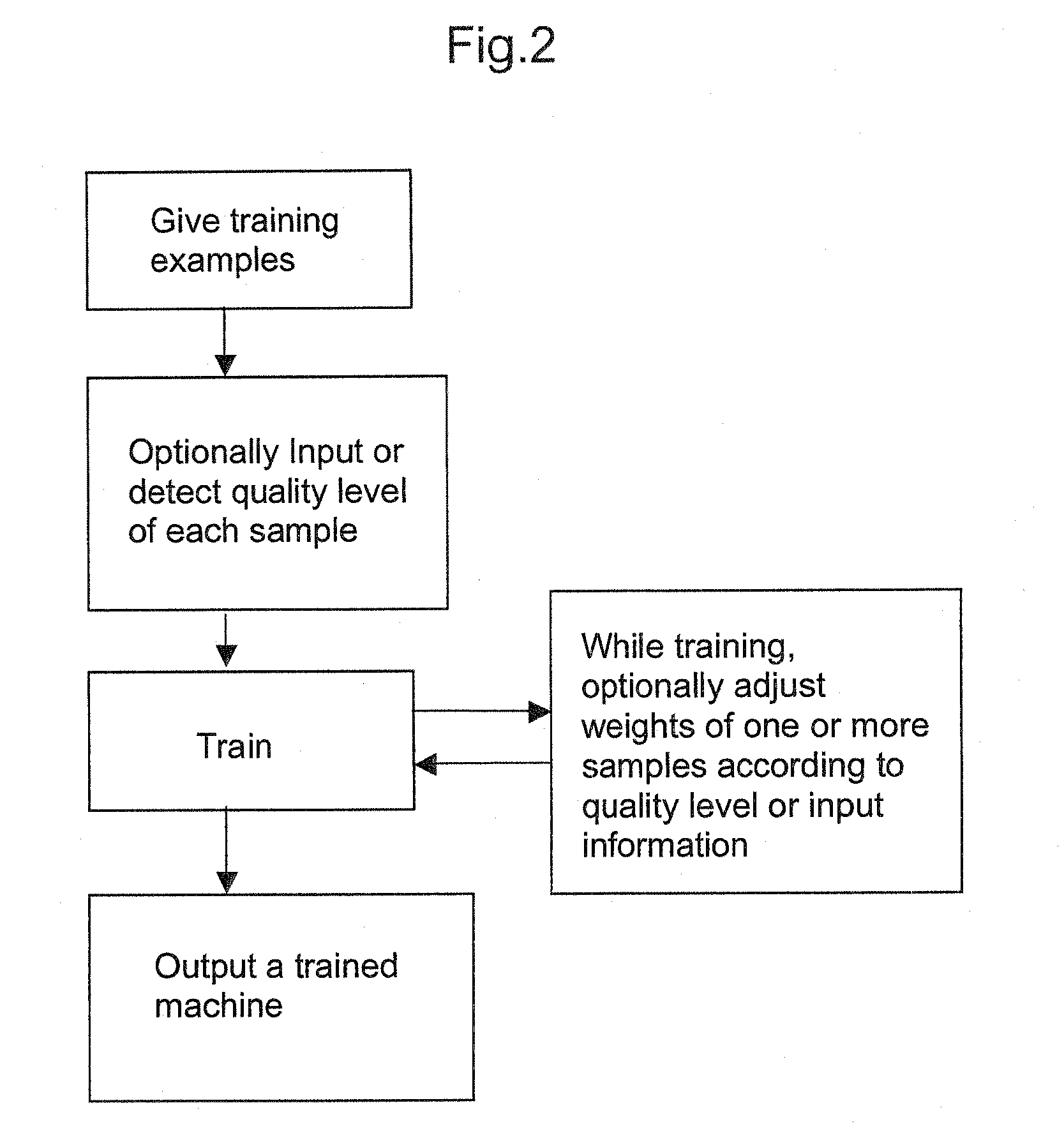Machine learning methods and systems for identifying patterns in data
a machine learning and data technology, applied in the field of machine learning methods and systems for identifying patterns in data, can solve the problems of limited number of methods available for searching across diverse, difficult implementation of search methods, and often inability of researchers to adequately query this data, so as to reduce dimensionality, reduce dimensionality differently, and maximize performance function dependent
- Summary
- Abstract
- Description
- Claims
- Application Information
AI Technical Summary
Benefits of technology
Problems solved by technology
Method used
Image
Examples
examples
[0212]Exemplary implementations in accordance with aspects of the invention will now be further described with respect to the following non-limiting examples.
[0213]The following data have been obtained by working with a prototype feature reduction method, and two published data sets. These experiments demonstrate that the feature reduction method matches or exceeds any other method available for analysis.
[0214]1. Feature Selection for AML / ALL
[0215]Using the gradient to assess feature importance is a wrapper and takes into account joint information to identify the best groups of genes has been developed in accordance with the methods of the invention, and has been incorporated into a query engine. In order to compare this method to current technology, such as the Weka package, the AML / ALL data set was obtained. This data was processed and the results compared to other published methods for the same set.
[0216]Training data had 38 samples, 11 AML and 27 ALL, obtained from bone marrow. ...
PUM
 Login to View More
Login to View More Abstract
Description
Claims
Application Information
 Login to View More
Login to View More - R&D
- Intellectual Property
- Life Sciences
- Materials
- Tech Scout
- Unparalleled Data Quality
- Higher Quality Content
- 60% Fewer Hallucinations
Browse by: Latest US Patents, China's latest patents, Technical Efficacy Thesaurus, Application Domain, Technology Topic, Popular Technical Reports.
© 2025 PatSnap. All rights reserved.Legal|Privacy policy|Modern Slavery Act Transparency Statement|Sitemap|About US| Contact US: help@patsnap.com



